


|
|
|
|||||||||||||||
|
|
||||||||||||||||
|
|
|||
|
|
Casablanca Hassan II Mosque 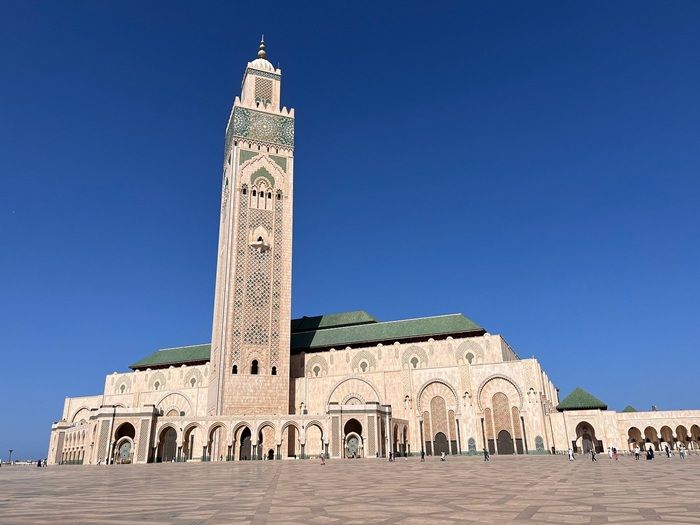
The Hassan II Mosque, also known as Grande Mosquée Hassan II, is an iconic landmark in Casablanca. Its conception and construction were driven by the vision of King Hassan II, who wanted to create a monument that reflected the greatness of Islam and Morocco. The construction of the mosque began in 1986 and was completed in 1993. The mosque was inaugurated on August 30, 1993, on the eve of King Hassan II's 60th birthday. The project was largely funded by public donations from Moroccan citizens. The construction of the Mosque was a massive undertaking that involved a workforce, depending on the source of information, of between 6,000 and 13,000 Moroccan artisans and craftsmen. The project was led by French architect Michel Pinseau, who designed the mosque to incorporate traditional Islamic architecture with modern engineering techniques. The mosque was built on a promontory overlooking the Atlantic Ocean, with a portion of the building extending over the water on a platform supported by pillars. This location was chosen to symbolize the bond between heaven and earth, although it also symbolises Morocco's connection to the sea. 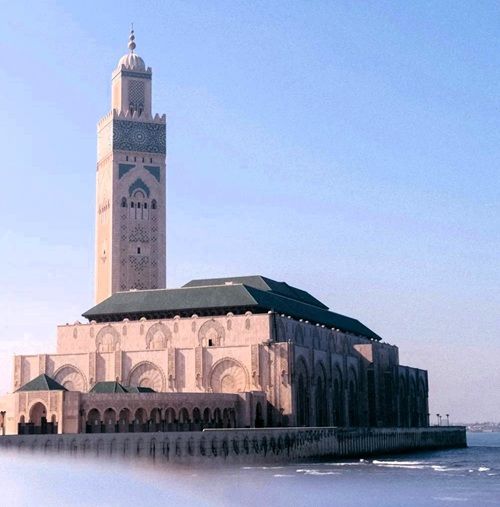 The materials used in the construction were primarily sourced from Morocco, including marble, granite, and cedar wood. The only exceptions were the chandeliers, which were imported from Italy. The mosque's construction was a testament to the skills and craftsmanship of Moroccan artisans, who employed traditional techniques to create intricate mosaics, wood carvings, and stucco decorations. The exterior of the mosque is a blend of traditional Islamic architecture and modern design elements. A striking feature is the mosque's minaret, which stands at 210 meters (689 feet) tall, making it the second tallest minaret in the world. The minaret is adorned with intricate geometric patterns and topped with a laser beam that points towards Mecca, a unique feature that symbolizes the direction of prayer for Muslims. 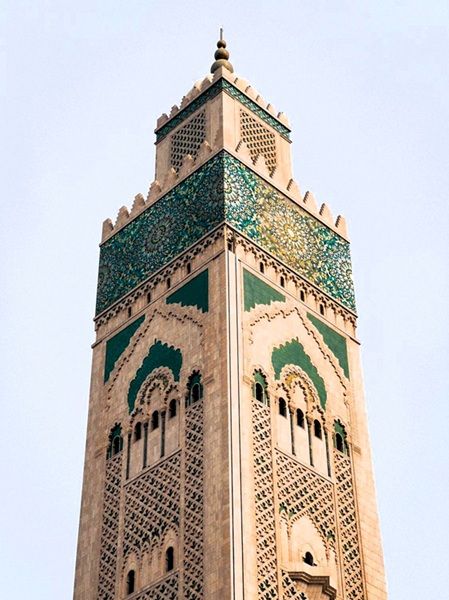 The mosque's courtyard or square is spacious and can accommodate 80,000 worshippers during prayer times and religious events. The mosque's exterior walls are made of hand-crafted marble. The building's façade is adorned with beautiful zellij (mosaic tilework), which features intricate geometric and floral patterns in vibrant colours. The doors of the mosque are made of hand-carved cedar wood and adorned with intricate geometric patterns and calligraphy. The doors and their surrounds are not only functional entrances but also a work of art that reflects the rich cultural heritage of Morocco. 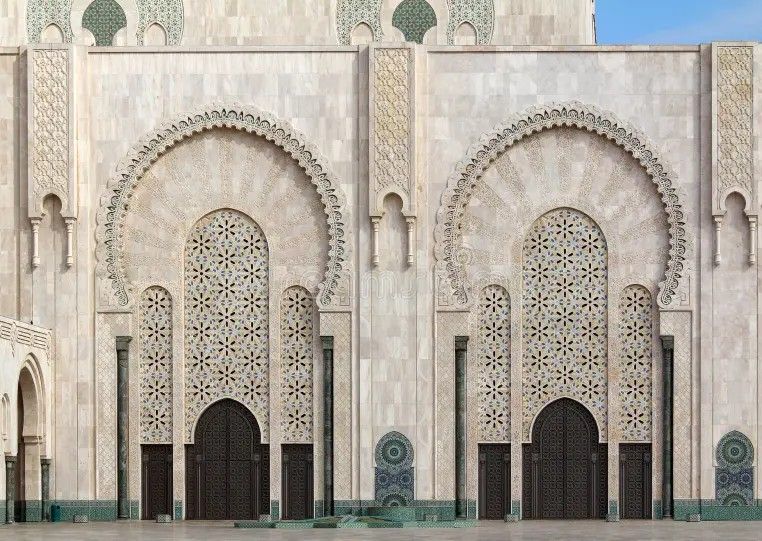 The interior of the building is equally impressive, with a capacity to accommodate up to 25,000 worshippers. The prayer hall is the main area where worshippers gather for prayers, featuring intricate decorations and a spacious layout. It features a stunning array of architectural and decorative elements with the walls being decorated with stucco, mosaics, and marble. 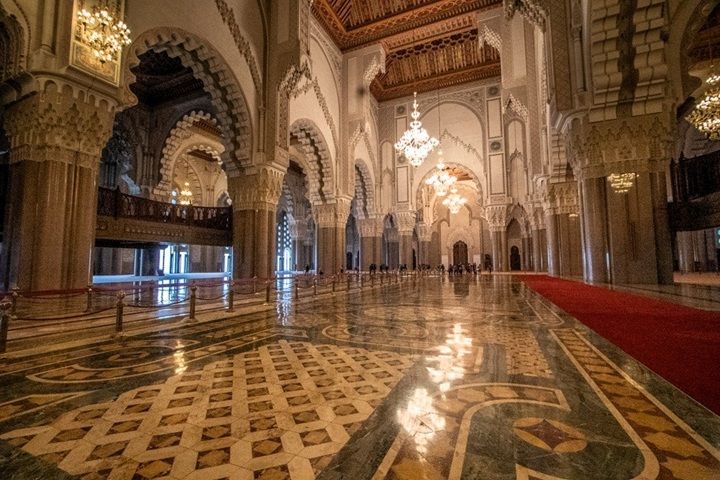 The roof is retractable with a vast electric sliding roof that opens and closes in seconds thus allowing for natural ventilation. The ceiling is made of carved cedar wood and is adorned with intricate designs. 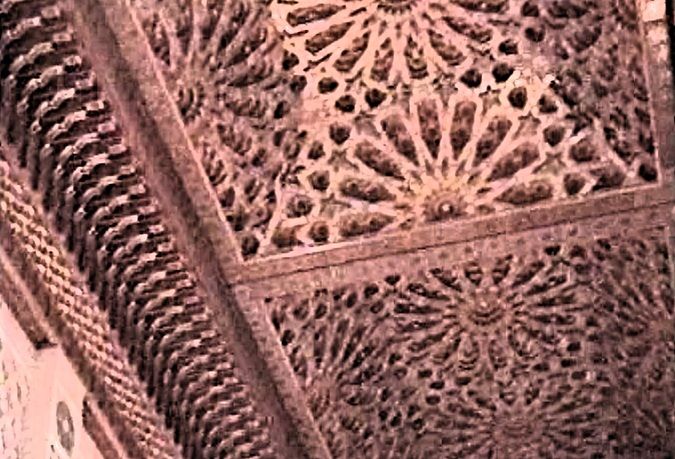 The mosque's floor is made of marble and other high-quality materials sourced from various regions of Morocco. The prayer hall on the ground floor spans 20,000 square meters. It also has a glass floor section, which allows worshippers to see the Atlantic Ocean beneath them. This design element is inspired by a verse in the Qur'an that says, "the throne of God was upon the water". The mosque's floor is also equipped with electric underfloor heating to keep worshippers warm during colder months. 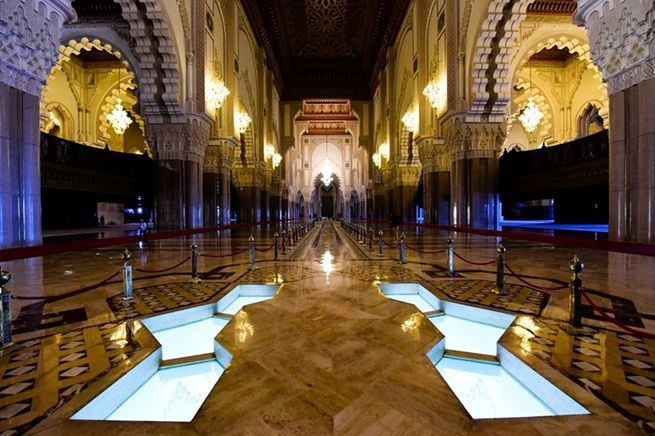 On the sides, at an upper level, are floors with timber balustrades where the women are accommodated. At the far end is the mihrab, which is a niche in the wall of a mosque that indicates the direction of the Kaaba in Mecca towards which Muslims should face when praying. This is a focal point within the prayer hall and is decorated with intricate tilework and carvings. At the side of the mihrab is the minbar which is a seat at the top of steps used by the preacher and is their equivalent to a pulpit. At the side of this is a plaque showing the lineage of King Hassen II. Washing before worship, known as Wudu or Ablution, is an essential ritual for Muslims to purify themselves before performing prayers. This practice is considered a form of spiritual and physical cleansing and is obligatory before each of the five daily prayers. The Hassan II Mosque's ablution facilities are designed to support this important ritual, ensuring that all worshippers can cleanse themselves before entering the prayer hall. Located below the prayer hall, the wudu provides easy access for those about to perform prayers. The dedicated ablution facilities are designed to accommodate a large number of worshippers. By performing wudu, Muslims prepare themselves both spiritually and physically for the act of worship, symbolizing purity and devotion. The facility is equipped with numerous marble fountains and basins where worshippers can perform the various steps of wudu. 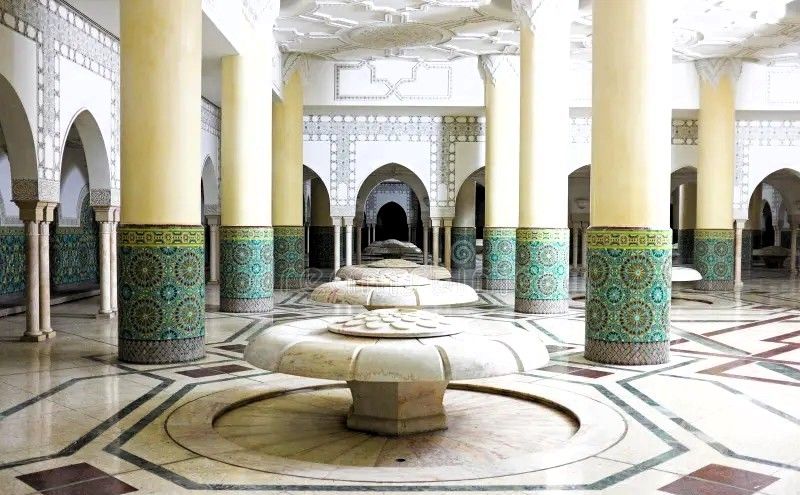 Also, on this level, which is reached by a descending staircase, is the hammam. 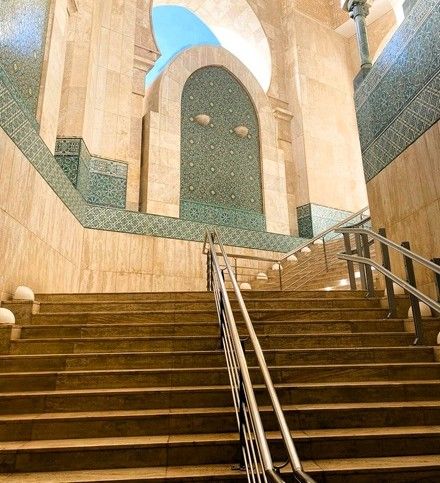 This is a traditional Moroccan bathhouse: a place for purification and relaxation. It is designed to reflect the traditional elements of Moroccan bathhouses while incorporating modern amenities. It features marble and tilework, with intricate patterns and designs that create a serene and luxurious atmosphere. The hammam is divided into several sections, each serving a different purpose in the bathing ritual. Upon entering the hammam, visitors first reach the changing room, where they undress and store their belongings. The bathing ritual typically begins in the cold room, where visitors can sit and acclimatise to the environment. This area helps prepare the body for the transition to the warmer rooms. Visitors then move to the warm room, which is heated to a moderate temperature. The hot room is the final stage in the hammam, featuring a higher temperature and steam.  The mosque also houses a library that contains religious texts and other scholarly works and provides a space for learning and reflection. The Hassan II Mosque is not only a place of worship but also a symbol of Morocco's cultural and architectural heritage. It is a symbol of the country's devotion to Islam and its commitment to preserving traditional craftsmanship while embracing the modern era and its techniques. Visitors to the mosque are left in awe of its grandeur, beauty, and the meticulous attention to detail that went into its creation. |
|
|
|
|
|||
All Photographs were taken by and are copyright of Ron Gatepain
| Site Map |